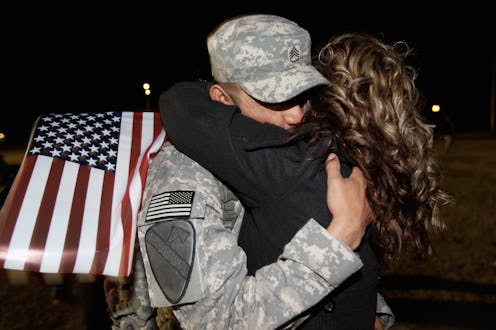News
What We Know About The Fort Hood Shooting So Far
On Wednesday, an Iraq veteran opened fire on Fort Hood army base in Texas, killing four and wounding 16. In the hours following the harrowing attack, Texas Rep. Michael McCaul, chairman of the House Homeland Security Committee, named the shooter as 34-year-old Ivan Lopez. It was the second time in five years that the Texas military base has been rocked by a fatal assault.
Back in 2009, it was Army Major Nidal Malik Hasan who opened fire on his former colleagues, killing 13 people and injuring another 30. It's a crime for which he currently awaits the death penalty, pending appeals.
Last September another lone gunman, Aaron Alexis, tore through the Washington Navy Yard, killing 12 people before being slain by police. The attacks have left many puzzled and worried about the state of security at America's domestic military bases. Fort Hood is the single largest active-duty base in the United States, boasting two full Army divisions and over 40,000 soldiers who work there.
There will be no public reckoning for Lopez as there was for Hasan, however — Lopez reportedly killed himself, with a gunshot to the head, after being confronted by a military police officer. According to Lt. General Mark Milley, Fort Hood's commander, Lopez (whom he did not name) had served four months in the Iraq War, and had dealt with behavioral and mental health issues, as well as a self-reported brain injury:
We do know that this soldier had behavioral health and mental health issues and was being treated for that.
Sadly, not all of the victims who survived the rampage are out of the woods just yet — eight of Lopez's victims are currently receiving care at Scott & White Hospital in nearby Temple, Texas, four of whom remain in critical condition. It's no doubt a tragically familiar experience for Scott & White's staff, as they treated a number of Hasan's victims in 2009.
President Obama said Wednesday that the FBI and Defense Department were working to uncover more information about the deadly assault. This is a sentiment echoed by Defense Secretary Chuck Hagel, who reflected on the "terrible tragedy":
When we have these kinds of tragedies on our bases, something's not working. We will continue to address the issue. Anytime you lose your people to these kinds of tragedies, it's an issue, it's a problem.
Fort Hood has a unique policy in regard to firearms, prohibiting any soldier from carrying a weapon while on the base. These restrictions were instituted following the 2009 mass shooting, as well as a rash of suicides throughout the base — by the books, Lopez would have had to register his private firearm with a commander and keep it locked-down in a secure room.
His weapon, according to Milley, was a semiautomatic Smith and Wesson .45 which had been recently purchased, but not at the base or authorized by it.
